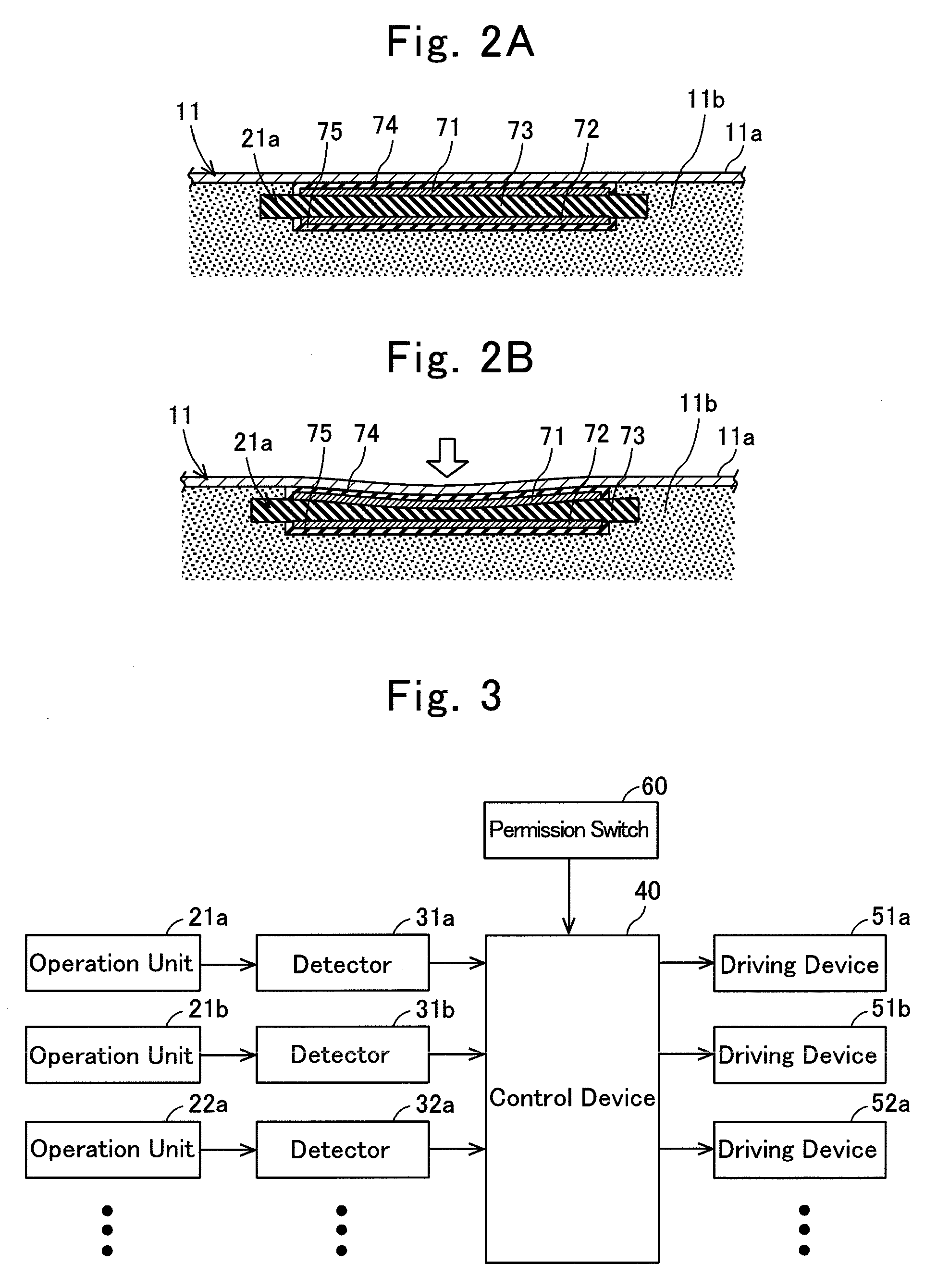Power seat device
a technology of power seat and power seat, which is applied in the direction of movable seats, chairs, pulse techniques, etc., can solve the problems of difficult to mention that the operability of the operator is satisfactory, the operator cannot easily recognize the desirable direction of a certain lever, etc., and achieves convenient compressive deformation, prevent the deviation of the position of the operation unit, and improve the operability. satisfactory
- Summary
- Abstract
- Description
- Claims
- Application Information
AI Technical Summary
Benefits of technology
Problems solved by technology
Method used
Image
Examples
first embodiment
Description of Power Seat Body and Operation Unit
[0039]A power seat device of a first embodiment will be described with reference to the drawings. As illustrated in FIG. 1, the power seat device includes a power seat body 10 that can adjust a state (a posture). The power seat body 10 is applied to a vehicle seat, and includes a seating surface 11, a back surface 12, and a headrest 13. Further, the power seat body 10 can perform a longitudinal slide operation of the seating surface 11, a tilt operation of the seating surface 11, a reclining operation of the back surface 12, a forward and backward movement operations of a lumbar support (not illustrated) provided in the back surface 12, an upward and downward movement operations of the headrest 13, and an inclination operation of the headrest 13 through an electrical operation.
[0040]The power seat body 10 is provided with operation units 21a, 21b, 22a, 22b, 23a, 23b, 24a, 24b, 25a, 25b, 26a, and 26b for performing the operations of th...
second embodiment
[0081]In the above-described embodiment, as illustrated in FIG. 5, a relation is established in which the moving speed of each of the movable members 11 and the others linearly increases with respect to an increase in the detected capacitance change amount. In this embodiment, as illustrated in FIG. 7, a relation is established in which the moving speed of each of the movable members 11 and the others like gradually increases with an increase in the detected capacitance change amount.
[0082]The control device 40 compares the detected capacitance with each of a plurality of threshold values Cth1, Cth2, Cth3, and Cth4, and controls the driving devices 51a and the others so that the moving speed of each of the movable members 11 and the others gradually increases with an increase in capacitance change amount.
[0083]In this case, the capacitance detected by the detectors 31a and the others and the moving speed of each of the movable members 11 and the others will be described with referen...
third embodiment
[0087]In the above-described embodiment, the capacitance when the permission switch 60 becomes the permission state is set as the reference value. Alternatively, the reference value may be set as the capacitance when the capacitance change speed (the derivative value) is included in the set range. Hereinafter, this will be described by referring to FIG. 9.
[0088]The upper drawing of FIG. 9 indicates a behavior of the capacitance detected by the detector 31a with time as in the case of FIG. 6. The middle drawing of FIG. 9 indicates a behavior of the capacitance change amount per unit time (hereinafter, referred to as a capacitance change speed) with time.
[0089]The capacitance change speed (the derivative value) is higher than the upper-limit threshold value Cmax or is lower than the lower-limit threshold value Cmin when a human sits on the seat. Further, the capacitance change speed substantially becomes zero until the permission switch 60 becomes the permission state before and after...
PUM
 Login to View More
Login to View More Abstract
Description
Claims
Application Information
 Login to View More
Login to View More - R&D
- Intellectual Property
- Life Sciences
- Materials
- Tech Scout
- Unparalleled Data Quality
- Higher Quality Content
- 60% Fewer Hallucinations
Browse by: Latest US Patents, China's latest patents, Technical Efficacy Thesaurus, Application Domain, Technology Topic, Popular Technical Reports.
© 2025 PatSnap. All rights reserved.Legal|Privacy policy|Modern Slavery Act Transparency Statement|Sitemap|About US| Contact US: help@patsnap.com



